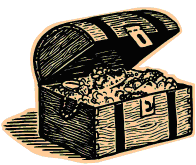
scrounge: /skrounj/ informal verb: to actively seek [books] from any available source
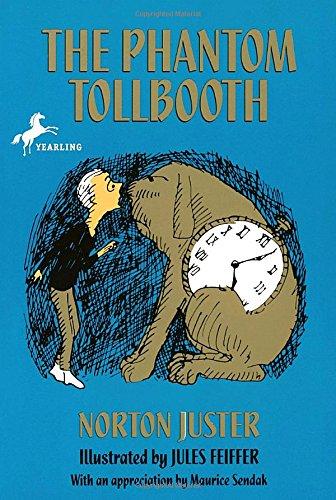
I decided that a blurb in my 2017 round-up post did not do The Phantom Tollbooth justice, so I'm writing up an expanded review all of its own.
I'd heard of this book for a while before reading it, but the title led me to assume it was some kind of ghost story. It's not -- it's basically a geek's paradise -- full of word play, fun with mathematics, etc. Have you ever wondered what it would be like if music had colors -- like if an orchestra played the sunrise? Or what it would be like to collect sounds, or eat letters? Or what a world without sound would be like? (At times this is basically "Synesthesia: The Novel.")
The story revolves around a boy named Milo who is simply bored and lethargic all the time. But when he receives a strange tollbooth in a box, he finds a portal to a land full of interesting places and eccentric characters -- for example, there's a witch who's actually a "Which," a "Whether Man," a Mathemagician, as well as King Azaz the Unabridged, all with something to teach him about the value of learning and curiosity.
It's a very fun story, especially the parts that involve word play and puns (which is why I'd much rather read the book myself than have it read to me, and imagine it could be more fun for children to read on their own as well). I suppose this is a book about learning, but also something about how to be wise, or how not to be ignorant, or how/why to pay attention to all that's around you -- in a way it's about educating yourself, but without all the heavy-handed "educational" stuffiness.
Scrounged From: PaperbackSwap.com
Format: Paperback
Author: Norton Juster
Pages: 256
Content Advisory: There are a few scenes of peril, especially toward the end.
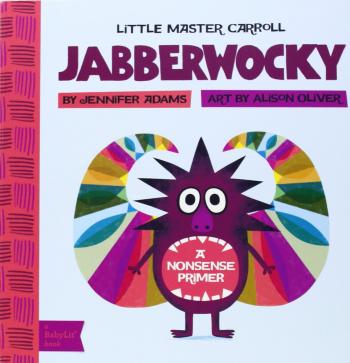
The BabyLit series is any literature-lover's dream come true. Whether you have children of your own, or nephews, nieces, godchildren, or friends, this is such a cute way to introduce babies and toddlers to some of your favorite classic books. While I think some entries in the series are better than others, one of my favorites so far is Jabberwocky. Probably that is partly because it includes large portions of Lewis Carroll's original poem, with such recognizable phrases as "the frumious bandersnatch," and "O frabjous day, callooh callay!"
Of course, this book has managed to omit any references to "vorpal swords" or slaying. Which does make the last bit somewhat choppy. But this is still a fun "nonsense primer," with cute, colorful images of nonsense creatures and a sweet final image of a father and son.
Scrounged From: Amazon (a Christmas present for our kids)
Format: Board book
Author: Jennifer Adams
Illustrator: Alison Oliver
Pages: 22
Content Advisory: None
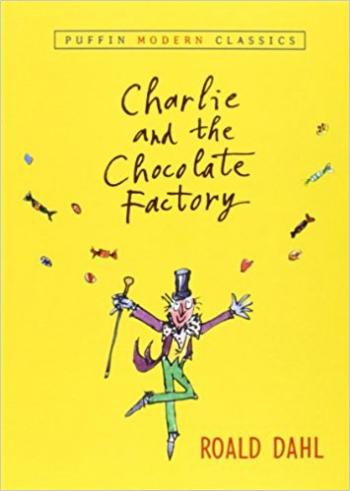
Charlie and the Chocolate Factory is the first Roald Dahl book that I've ever read. I'm ashamed to say I made it to adulthood before I even realized that his first name wasn't actually "Ronald." But it's better late than never, isn't it?
I'll also admit that, having seen Willy Wonka's Chocolate Factory as a child, it is difficult to mentally separate this story from Gene Wilder's magical portrayal of Wonka (I've heard some say that Depp was closer to the book, personality-wise, but I didn't see that version).
All the same, the song "Pure Imagination" captures this story quite aptly. What child has not fantasized about everlasting candy? This made "the chocolate room" all the more magical to me, as I absolutely used to fantasize about a natural world in which everything was made of different kinds of sweets. That as well as the boat on the chocolate river, and the great glass elevator, were the most memorable parts for me.
One aspect that I found interesting was the different treatment of Charlie in the movie vs. the book. In this book, Charlie is completely good and his fellow golden-ticket-holders are completely bad. There is no question of who the hero is because it's spelled out clearly from the beginning. Whereas, the movie apparently attempted to humanize Charlie by having him do a bad thing too.
I think that's why one thing that struck me about the book was how moralizing it came across, even underneath all the absurdity (at times reminding me of Hilaire Belloc's "cautionary" tales, minus the death of course). I have no problem with "good vs. evil" narratives; I suppose this just stands out more because I've become used to narratives that are more likely to portray complex heroes and villains. But I think the fantasy elements of the story made the fairly one-dimensional characters less problematic.
On another note, I am certain that J.K. Rowling must have been influenced by this story. Not only is there a "Slugworth" (minor character) here, but some of the goofier candy inventions remind me quite a bit of Weasleys' Wizard Wheezes.
Scrounged From: PaperbackSwap.com
Format: Paperback
Author: Roald Dahl
Illustrator: Quentin Blake
Pages: 155
Content Advisory: Some perilous and sad situations.
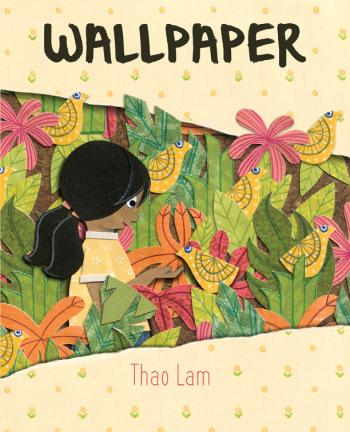
Wallpaper is a wordless story that's beautifully illustrated with paper collage art. It tells the tale of a young girl who has just moved into a new house, and is nervous about meeting the new children next door. Instead, she takes a journey into the wallpaper where she is chased by an odd yellow creature through several layers of amusingly decorated wallpaper before she realizes the monster just needs a friend.
Her friendship with the imaginary creature helps give her the courage to say hello to some potential new friends in the real world. I appreciate seeing shyness covered in a children's book, and I also liked the interplay between fantasy and reality. The different "worlds" in the different layers of wallpaper were also well done.
(Thanks to NetGalley for the review copy.)
Scrounged From: NetGalley
Format: Kindle
Author/illustrator: Thao Lam
Pages: 32
Content Advisory: None
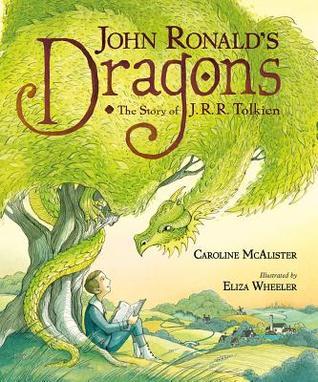
Finally! I've been waiting for this book to come along -- I just didn't realize it. John Ronald's Dragons does a wonderful job of interspersing a biography of J.R.R. Tolkien with one of the fantastical elements he's known for: dragons. Whether he's enjoying himself or experiencing great difficulties such as the loss of his mother as a boy, and World War I as a soldier, Tolkien's imagination helps him to cope.
It isn't until he takes a teaching position at Oxford that his imagination leads him to a hobbit named Bilbo Baggins, who in turn finally leads him on a long quest to his dragon. The story actually doesn't cover any details of Tolkien publishing his writing, nor does it mention The Lord of the Rings. It simply leaves him to "follow" his dragon through some familiar Middle Earth landscapes until he finds Smaug in the Lonely Mountain. The ending would probably seem abrupt if it wasn't so fantastical.
I'm sure this story will appeal to any fan of Tolkien. For children, it's a great introduction to the author of Middle Earth. While children who are unfamiliar with the series will not experience the "Yay, Bilbo!" moment that us adults do when Tolkien finally writes the first line of The Hobbit on a blank piece of paper, the dragons alone should be enough to pique the interest of a child. This story also manages to give good details without being too wordy. The end notes include a bibliography and some other detailed notes by the author and the illustrator.
Scrounged From: Our local library
Format: Hardcover
Author: Caroline McAlister
Illustrator: Eliza Wheeler
Pages: 48
Content Advisory: Tolkien's mother's death is mentioned briefly, as well as the destruction of war. The story contains many illustrations of dragons, but they are presented in an intriguing, fantastical manner and are not intended to terrify.

